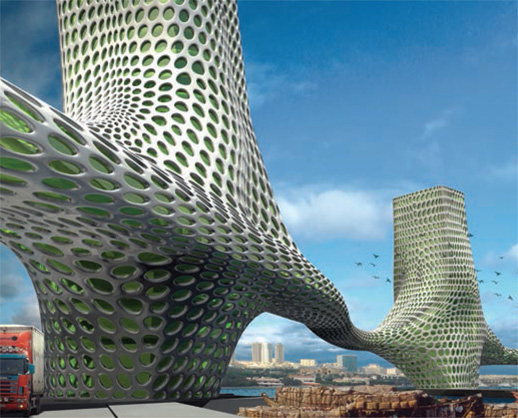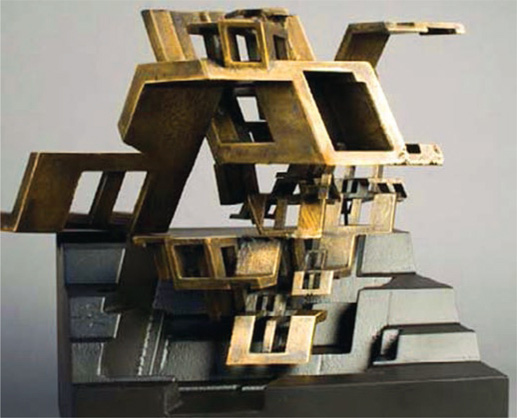Dunn - Digital Fabrication in Architecture
Here you can read online Dunn - Digital Fabrication in Architecture full text of the book (entire story) in english for free. Download pdf and epub, get meaning, cover and reviews about this ebook. publisher: Laurence King Publishing, genre: Romance novel. Description of the work, (preface) as well as reviews are available. Best literature library LitArk.com created for fans of good reading and offers a wide selection of genres:
Romance novel
Science fiction
Adventure
Detective
Science
History
Home and family
Prose
Art
Politics
Computer
Non-fiction
Religion
Business
Children
Humor
Choose a favorite category and find really read worthwhile books. Enjoy immersion in the world of imagination, feel the emotions of the characters or learn something new for yourself, make an fascinating discovery.
- Book:Digital Fabrication in Architecture
- Author:
- Publisher:Laurence King Publishing
- Genre:
- Rating:5 / 5
- Favourites:Add to favourites
- Your mark:
- 100
- 1
- 2
- 3
- 4
- 5
Digital Fabrication in Architecture: summary, description and annotation
We offer to read an annotation, description, summary or preface (depends on what the author of the book "Digital Fabrication in Architecture" wrote himself). If you haven't found the necessary information about the book — write in the comments, we will try to find it.
Dunn: author's other books
Who wrote Digital Fabrication in Architecture? Find out the surname, the name of the author of the book and a list of all author's works by series.
Digital Fabrication in Architecture — read online for free the complete book (whole text) full work
Below is the text of the book, divided by pages. System saving the place of the last page read, allows you to conveniently read the book "Digital Fabrication in Architecture" online for free, without having to search again every time where you left off. Put a bookmark, and you can go to the page where you finished reading at any time.
Font size:
Interval:
Bookmark:

Published in 2012
by Laurence King Publishing Ltd
361373 City Road
London EC1V 1LR
Tel +44 20 7841 6900
Fax +44 20 7841 6910
E
www.laurenceking.com
Design copyright 2012 Laurence King Publishing Limited
Text Nick Dunn
Nick Dunn has asserted his right under the Copyright, Designs, and Patent Act 1988, to be identified as the Author of this work.
All rights reserved. No part of this publication may be reproduced or transmitted in any form or by any means, electronic or mechanical, including photocopy, recording, or any information storage and retrieval system, without prior permission in writing from the publisher.
A catalog record for this book is available from the British Library.
ISBN 978 185669 891 7
Designed by John Round Design
Printed in China
Front cover: Nordpark Cable Railway, Innsbruck, by Zaha Hadid Roland Halbe

Contents
Related study material is available on the Laurence King website at www.laurenceking.com


Introduction
Architecture is fundamentally concerned with two core activities: designing and making. Of course, these are not mutually exclusive and often inform one another in a continuous dialogue as projects progress from concepts, through design development, to final formtypically the realization of a building. The ability to effectively communicate creative ideas remains a central aspect of the discipline. With the development of numerous Computer-Aided Design (CAD) and other software packages, the variety of design processes available to architects, which may influence the fabrication of architecture and its components, is greater than ever. Of specific interest in this field is the recent capability to integrate analog and digital techniques and processes to produce physical objects, whether three-dimensional concept diagrams, scale models, or full-size prototypes.
The increasing proliferation of computers and advanced modeling software has enabled architects and students alike to conceive and construct designs that would be very difficult to develop using traditional methods. In particular, the emergence of new computational modeling software, which allows parametric systems and complex biological organizations to be generated and explored, offers new avenues of holistic design production and detailed component manufacturing for the architectural designer. These massive shifts in design processes have implications in material culture far beyond the discipline of architecture, as ever more research and development is conducted at cross-disciplinary levels worldwide. In addition, the application of CAD technologies as part of the production of physical models and prototypes is becoming increasingly widespread through processes such as CAD/CAM (Computer-Aided Manufacture), Computer Numerical Control (CNC) milling, and rapid prototyping. The translation of computer-generated data to physical artifact is not a one-way street; processes may be reversed with equipment such as a three-dimensional scanner, or digitizer, which is used to trace contours of physical objects directly into the computer. Therefore, this book will focus on the inspiring possibilities offered by digital fabrication for architecture, with all the different technologies and techniques that are now available for the holistic and componential making of designs.

The prevalence of digital images in the design and communication of architecture is commonplace. Even so, this imposes no limits on designers creativityas is shown by this digital montage for NOXs proposal for The Three Graces hotel and office towers in Dubai. The design is based on the idea of a networked skin offering a symbolic gateway to the Khor Dubai Wharfage.

The pursuit by Supermanoeuvre of innovative design and fabrication processes is typified by Supermatter I, where a mould was first designed algorithmically. Fused Deposition Modeling was used to 3D print a positive so that a bronze cast could be produced via a lost mould process to form a complex self-supporting structure. Prototyping of this nature has significant potential for architecture as full structures may be realized from lightweight formwork.

This stereolithographic prototype of the skeletal structure for Kokkugias project Fibrous Tower is part of a series of investigations that explore the generation of ornamental, structural, and spatial order through an algorithmic design methodology. Conceived as a load-bearing shell that distributes forces across its network, the physical model is a direct translation of the sophisticated design data that satisfies such criteria.

Zaha Hadids Mobile Art Pavilion for Chanel takes advantage of digital imaging and construction processes to create a design with fluid geometries and dynamic space.

Digital fabrication techniques provide architects with a spectrum of applications, transforming even long-held traditional methods of representation such as modelmaking. This digital model for Coop Himmelb(l)aus design for BMW Welt, Munich, was used to make laser-cut components to achieve its complex geometrical formal qualities.



The design for Hills Place, London, by Amanda Levete Architects, developed this sculptural faade as a logical response to the narrow street, thereby maximizing the natural daylight available. The form is achieved through a system of aluminum profiles, more commonly used in the production of ship hulls. The faade is fabricated using curved 5-inch (140mm) profiles that are connected on site. The metallic silver coating is a highperformance paint typically applied to the surface of yachts. Self-cleaning glass and discreet hidden gutters ensure the faade retains its sculptural qualities.

Font size:
Interval:
Bookmark:
Similar books «Digital Fabrication in Architecture»
Look at similar books to Digital Fabrication in Architecture. We have selected literature similar in name and meaning in the hope of providing readers with more options to find new, interesting, not yet read works.
Discussion, reviews of the book Digital Fabrication in Architecture and just readers' own opinions. Leave your comments, write what you think about the work, its meaning or the main characters. Specify what exactly you liked and what you didn't like, and why you think so.
















